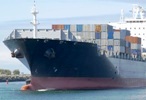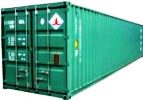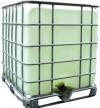| Mubychem Group, established in 1976, is the pioneer manufacturer of Ammonium Chloride, Pharmaceutical, Fragrance & Flavor chemicals in India. Mubychem Group has several manufacturing facilities spread across Gujarat and Mumbai India and world wide contacts and toll manufacturers. We are exporting globally to countries like USA, Canada, Europe, UAE, South Africa, Tanzania, Kenya, Egypt, Nigeria, Uganda, Turkey, Mexico, Brazil, Chile, Argentina, Dubai etc. |
The participating units have one or more accreditations like FDA - GMP approval; ISO-9001 Certified; "REACH"registered; ISO-22000; Kosher Certified;Halal Certified; HACCP. We offer Pure & IP BP USP FCC Food Grade ACS AR Analytical Reagent Grades of Chemicals | |







Ammonium Chloride MSDS Sheet, IP BP USP ACS Analytical reagent FCC Food Pharma Grade Manufacturers
Ammonium Chloride BP USP IP ACS Analytical Reagent Food Grade FCC Food grade Manufacturers
Commercial Information, Specifications and Uses click Ammonium Chloride Manufacturers
Ammonium Chloride
Technical & Pure Crystals, Tablets, Blocks, Bricks Pellets
Also IP BP Ph. Eur. USP ACS AR LR FCC Food Grades

Ammonium Chloride MSDS Sheet; Material Safety Data Sheet
1. Product Identification
Synonyms: Sal ammoniac; Ammonium muriate, Salamaka, Salmiac, Muriate of Ammonia
CAS No.: 12125-02-9
Molecular Weight: 53.49
Chemical Formula: NH4Cl
2. Composition/Information on Ingredients
Ingredient: Ammonium Chloride
CAS No.: 12125-02-9
Percent: 99 - 100%
3.Hazards Identification
Emergency Overview
WARNING! CAUSES IRRITATION TO SKIN, EYES AND RESPIRATORY TRACT. HARMFUL IF SWALLOWED OR INHALED.
Health Rating: 1 - Slight
Flammability Rating: 0 - None
Reactivity Rating: 0 - None
Contact Rating: 1 - Slight
Lab Protective Equip: GOGGLES; LAB COA
Storage Color Code: Orange (General Storage)
-------------------------------------------------
Potential Health Effects
Inhalation: If Ammonium Chloride is inhaled, remove to fresh air. If not breathing, give artificial respiration. If breathing is difficult, give oxygen. Get
medical attention.
Ingestion: It causes irritation to the gastrointestinal tract. Symptoms may include nausea, vomiting and diarrhea. If large quantities of this material are swallowed, call a physician immediately.
Skin Contact: Ammonium Chloride causes irritation to skin. Symptoms
include redness, itching, and pain.
Eye Contact: It causes irritation, redness, and pain.
Chronic Exposure: No information found.
Aggravation of Pre-existing Conditions: No information found.
Inhalation: Remove to fresh air. If not breathing, give artificial respiration. If breathing is difficult, give oxygen. Get medical attention.
Ingestion: Induce vomiting immediately as directed by medical personnel. Never give anything by mouth to an unconscious person. Get medical attention.
Skin Contact: Immediately flush skin with plenty of water for at least 15 minutes. Remove contaminated clothing and shoes. Get medical attention. Wash clothing before reuse. Thoroughly clean shoes before reuse.
Eye Contact: Check for and remove any contact lenses. In case of contact, immediately flush eyes with plenty of water for at least 15 minutes. Cold water may be used. Get medical attention.
Fire: Ammonium Chloride is not considered to be a fire hazard. At fire temperatures ammonium chloride begins to corrode metals and may dissociate into ammonia and hydrogen chloride. Mixtures of about 16% to 25% (by volume) ammonia gas in air are flammable.
Explosion: It is not considered to be an explosion hazard.
Fire Extinguishing Media: Use any means suitable for extinguishingsurrounding fire. Water spray may be used to keep fire exposed containers cool.
Special Information: In the event of a fire, wear full protective clothing and NIOSH-approved self-contained breathing apparatus with full face piece operated in the pressure demand or other positive pressure mode.
6. Accidental Release Measures
Small Spill: Use appropriate tools to put the spilled solid in a convenient waste disposal container. Finish cleaning by spreading water on the contaminated surface and dispose of according to local and regional authority requirements.
Large Spill: Use a shovel to put the material into a convenient waste disposal container. Be careful that the product is not present at a concentration level above TLV. Check TLV on the MSDS and with local authorities.
Keep Ammonium Chloride in a tightly closed container. Protect it from physical damage. Store it in a cool, dry, ventilated area away from sources of heat, moisture and incompatibilities. Containers of Ammonium Chloride material may be hazardous when empty since they retain product residues (dust, solids); observe all warnings and precautions listed for the product.
8. Exposure Controls/Personal Protection
Airborne Exposure Limits: Ammonium chloride:-ACGIH Threshold Limit Value (TLV):
10 mg/m3 (TWA); 20 mg/m3 (STEL) Fume
Ventilation System: A system of local and/or general exhaust is recommended to keep employee exposures below the Airborne Exposure Limits. Local exhaust ventilation is generally preferred because it can control the emissions of the contaminant at its source, preventing dispersion of it into the general work area. Please refer to the ACGIH document, Industrial Ventilation, A Manual of Recommended Practices, most recent edition, for details.
Personal Respirators (NIOSH Approved): If the exposure limit is exceeded and engineering controls are not feasible, a half face piece particulate respirator (NIOSH type N95 or better filters) may be worn for up to ten times the exposure limit or the maximum use concentration specified by the appropriate regulatory agency or respirator supplier, whichever is lowest.. A full-face piece particulate respirator (NIOSH type N100 filters) may be worn up to 50 times the exposure limit, or the maximum use concentration specified by the appropriate regulatory agency, or respirator supplier, whichever is lowest. If oil particles (e.g. lubricants, cutting fluids, glycerin, etc.) are present, use a NIOSH type R or P filter. For emergencies or instances where the exposure levels are not known, use a full-face piece positive-pressure, air-supplied respirator.
Skin Protection: Wear impervious protective clothing, including boots, gloves, lab coat, apron or coveralls, as appropriate, to prevent skin contact.
Eye Protection: Use chemical safety goggles and/or full face shield where dusting or splashing of solutions is possible. Maintain eye wash fountain and quick-drench facilities in work area.
9. Physical and Chemical Properties
pH of Ammonium Chloride : 5.5 (1% aq.sol.); 5.1 (3% aq.sol.); 5.0 (10% aq.sol.)% Volatiles by volume @ 21C (70F): 0
Boiling Point: 520C (968F)
Melting Point: 338C (640F) Sublimes
Vapor Density (Air=1): 1.9
Vapor Pressure (mm Hg): 1.0 @ 160C (320F)
Evaporation Rate (BuAc=1): No information found.
10. Stability and Reactivity
Stability: Ammonium Chloride is stable under ordinary conditions of use and storage.Hazardous Decomposition Products: Ammonium Chloride involvement in a fire causes decomposition to form hydrogen chloride and ammonia.
Hazardous Polymerization: Will not occur.
Incompatibilities: Concentrated acids, strong bases, silver salts, potassium chlorate, ammonium nitrate, bromine trifluoride and iodine heptafluoride. Ammonium Chloride reacts explosively with potassium chlorate or bromine trifluoride, and violently with bromide pentafluoride, ammonium compounds, nitrates, and iodine heptafluoride. Explosive nitrogen trichloride may result from reaction of ammonium chloride and hydrogen cyanide.
Conditions to Avoid: Heat, moisture, incompatibles.
11. Toxicological Information
Oral rat LD50 : 1650 mg/kg Investigated as a mutagen.12. Ecological Information
Environmental Fate: No information found.Environmental Toxicity: No information found.
13. Disposal Considerations
Whatever cannot be saved for recovery or recycling should be managed in an appropriate and approved waste disposal facility. Processing, use or contamination of this product may change the waste management options. State and local disposal regulations may differ from federal disposal regulations. Dispose of container and unused Ammonium Chloride in accordance with legal requirements.
14. Transport Information
Not regulated15. Regulatory Information
USA
TSCA:
CAS# 12125-02-9 is listed on the TSCA inventory.
Health & Safety Reporting List
None of the chemicals are on the Health & Safety Reporting List.
Chemical Test Rules
None of the chemicals in this product are under a Chemical Test Rule.
Section 12b
None of the chemicals are listed under TSCA Section 12b.
TSCA Significant New Use Rule
None of the chemicals in this material have a SNUR under TSCA.
SARA
Section 302 (RQ)
CAS# 12125-02-9: final RQ = 5000 pounds (2270 kg)
Section 302 (TPQ)
None of the chemicals in this product have a TPQ.
SARA Codes
CAS # 12125-02-9: acute, chronic.
Section 313
No chemicals are reportable under Section 313.
Clean Air Act:
This material does not contain any hazardous air pollutants. This material does not contain any Class 1 Ozone depletors. This material does not contain any Class 2 Ozone depletors.
Clean Water Act:
CAS# 12125-02-9 is listed as a Hazardous Substance under the CWA. None of the chemicals in this product are listed as Priority Pollutants under the CWA. None of the chemicals in this product are listed as Toxic Pollutants under the CWA.
OSHA:
None of the chemicals in this product are considered highly hazardous by OSHA.
CAS# 12125-02-9 can be found on the following state right to know lists: California, New Jersey, Florida, Pennsylvania, Minnesota, Massachusetts.
California No Significant Risk Level: None of the chemicals in this product are listed.
European Labeling in Accordance with EC Directives
EINECS: This product is on the European Inventory of Existing Commercial Chemical Substances.
Hazard Symbols:
XN
Risk Phrases:
R 22 Harmful if swallowed.
R 36 Irritating to eyes.
Safety Phrases:
S 22 Do not breathe dust.
WGK (Water Danger/Protection)
CAS# 12125-02-9: 1
Canada
CAS# 12125-02-9 is listed on Canada's DSL List. CAS# 12125-02-9 is listed on Canada's DSL List.
This product has a WHMIS classification of D2B.
CAS# 12125-02-9 is listed on Canada's Ingredient Disclosure List.
WHMIS (Canada):
This product has a WHMIS classification of D2B.
CAS# 12125-02-9 is listed on Canada's DSL List. CAS# 12125-02-9 is listed on Canada's DSL List.
CAS# 12125-02-9 is listed on Canada's Ingredient Disclosure List.
DSCL (EEC):
HMIS (U.S.A.):
Health Hazard: 2
Fire Hazard: 0
Reactivity: 0
Personal Protection: E
National Fire Protection Association (U.S.A.):
Health: 2
Flammability: 0
Reactivity: 0
Specific hazard:
Protective Equipment:
Gloves. Lab coat. Dust respirator. Be sure to use an approved/certified respirator or equivalent. Splash goggles.
NFPA Ratings:
Health: 2;
Flammability: 0;
Reactivity: 0
Australian Hazchem Code: None allocated.
Poison Schedule: None allocated.
16. Other Information
Disclaimer:**********************************
Our company provides this Ammonium Chloride MSDS information sheetcontained herein in good faith but makes no representation as to its comprehensiveness or accuracy. This Ammonium Chloride MSDS sheet is intended only as a guide to the appropriate precautionary handling of the material by a properly trained person using this product. Individuals receiving the information must exercise their independent judgment in determining its appropriateness for a particular purpose.
**********************************
Ammonium Chloride Manufacturers
MUBYCHEM GROUP
CHINCHBUNDER, MUMBAI 400009, INDIA
TEL: (OFFICE) 91-22-23774610, 91-22- 23723564. 91-22-23728264
e-mail: anmol@pcmenergy.com

Copyright and Usual Disclaimer is Applicable.
Global or International Ammonium Chloride Suppliers, Exporters, Importers, Manufacturers
If I give you “My Word” Nobody can undo it.
If I sign an “Agreement” my Lawyer will undo it
Perfection is made up of small thing but it is not small.
